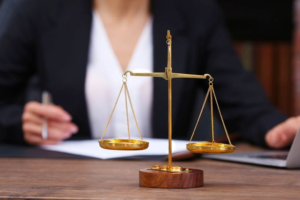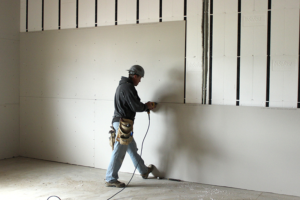Attorneys are skilled in gathering and strategically presenting the necessary documentation to establish liability. They also avoid mistakes that may compromise a case, such as admitting fault or accepting low-ball settlement offers from insurance companies.
They evaluate past and current damages, including medical expenses, property damage, lost wages, and pain and suffering. They can even project future costs for long-term care and loss of consortium. Contact Bristol Auto Accident Lawyer now!

While cars have improved significantly over the years, and laws like speed limits and seat belts have helped to reduce fatalities, automobile accidents still happen. Many of these accidents can be traced back to one thing – negligence. Negligence is a legal term that refers to a person’s failure to exercise the degree of care and caution expected under similar circumstances.
Having an experienced car accident lawyer is critical to the success of your case. The right attorney can help you secure compensation for your medical expenses, lost wages, property damage, and pain and suffering. They can also provide valuable insight into the complex issues of a car accident lawsuit, including what types of evidence to collect and how to deal with insurance companies.
When you hire a lawyer, the first step is an initial consultation. During this meeting, you can feel the attorney’s approach and dedication to your case. You can also ask questions about their experience, fees, success rate, and any other relevant information. Some attorneys also offer free case evaluations, which is a great way to evaluate an attorney’s suitability for your car crash claim.
A good lawyer will ensure that all of the important evidence is collected in your case. This can include photographs of the accident scene, witness testimony, and police reports. In some cases, a lawyer will even go back to the accident site himself/herself to see the scene and examine the evidence.
The right attorney can help you to recover the maximum amount of damages for your losses. This includes medical bills, lost wages from time off work, property repair or replacement costs, and non-economic damages such as pain and suffering.
Car accident claims are often contested by both parties. Insurance companies can be particularly aggressive in attempting to avoid paying out and even denying liability altogether. A knowledgeable New York City car accident attorney will be able to navigate the complexities and get you the compensation you deserve. This can be in the form of a settlement or verdict at trial.
Reputation
A good car accident lawyer should have a solid reputation for putting their clients’ needs above their own and for fighting aggressively for fair compensation. When you choose an attorney, ask for referrals from people who have hired them in the past and listen to their feedback. Ask about the lawyer’s track record and how many similar cases they have won. A reputable car accident lawyer will not be reluctant to provide you with this information during a consultation.
A skilled car accident lawyer will understand how insurance companies work and the tactics they use to deny claims or offer less than the victim deserves. They also have a deep understanding of insurance laws, including policy limits and how to interpret them. Additionally, they have a keen understanding of the impact that comparative negligence laws can have on your case’s compensation.
An experienced car accident attorney will be familiar with the local courts and their staff. This can make it easier to navigate the system, especially if your case goes to trial. They may also have a better understanding of the local judges and how they tend to rule on similar cases.
In addition to ensuring you receive a fair settlement for the damage done to your vehicle, a car accident lawyer can help you obtain financial compensation for your physical and emotional losses. It can be difficult to place a value on these types of losses, but an experienced lawyer will take into account the many ways your life has been impacted by the collision and fight for the appropriate compensation.
The right New York City car accident lawyer can help you file a successful claim against the at-fault party and secure maximum compensation for your damages. Contact the attorneys at Greenstein & Milbauer, LLP, to learn more about their experience and what they can do for you. You can reach them by phone or online to schedule your free consultation today.
Access to Experts
Car accidents are complex, and determining who’s at fault often requires the expertise of a professional. A skilled lawyer can investigate the incident, gather evidence, and build a case for compensation on your behalf. They can also help you file a claim with the insurance company and negotiate for the best settlement.
Often, a car accident involves multiple parties, such as other drivers, pedestrians, and entities responsible for the road (like government agencies). In this scenario, it can be difficult to determine liability and pursue damages. An experienced New York car accident attorney can help you navigate the process and ensure that your rights are protected.
A good auto accident lawyer will have a network of professionals to draw upon, including experts in vehicle mechanics, crash reconstruction, and medical professionals. These specialists can help strengthen your case by providing unbiased opinions and testimony. They can also help determine the extent of your injuries, which is important when pursuing damages.
Injuries resulting from a car crash can be extensive and expensive to treat. These can include everything from broken bones to disfiguring lacerations, which require weeks of healing and thousands of dollars in medical bills. They can also impact quality of life, causing lingering pain and preventing you from participating in your regular activities.
A New York car accident lawyer can identify all of your losses and what type of compensation you are entitled to receive. This may include medical expenses, lost wages, property damage, and emotional distress. In addition, they can help you calculate the cost of a replacement vehicle and any personal belongings that were destroyed in the collision.
An experienced car accident lawyer can also handle more nuanced areas of compensation, such as the loss of consortium. This reflects the impact that an injury has on a victim’s relationship with their spouse, and can include things like a decrease in affection, sexual relations, and comfort. A good car accident lawyer can help you secure the maximum amount of compensation possible for your losses and allow you to focus on healing and returning to your normal routine.
Negotiation Skills
A good car accident lawyer is a skilled negotiator. Their ability to assess the facts of a case, understand how insurance companies operate, and effectively communicate with opposing counsel can help turn the scales in their client’s favor. They also understand that negotiating is an art form that requires both legal expertise and psychological acumen.
They will work diligently to gather evidence for your case, including police reports, medical records, witness statements, and other documentation to support your claim. They will meticulously review this information to present a strong argument to the insurance company and establish the full extent of your damages. They will then draft a demand letter that clearly articulates your injuries, damages, and the impact on your life, along with a specific settlement amount.
In many cases, insurance companies make an initial offer that is far lower than what you deserve. They will often try to bully you into taking their low-ball offers, but an experienced car accident attorney will know when to push back. They will work tirelessly to get you the compensation you deserve.
Car accident lawyers are adept at articulating their clients’ needs, and they will handle all correspondence with the insurance company, ensuring that communication is professional, precise, and timely. They will also ensure that any agreements reached are memorialized in writing, avoiding any misunderstandings or disputes down the road.
A car accident lawyer’s negotiating skills can significantly increase the chances of reaching a settlement and avoiding lengthy and costly litigation. Their familiarity with the insurance companies’ tactics will allow them to anticipate and counter any stalling strategies.
In addition to negotiating for a fair settlement, an experienced car accident lawyer can provide invaluable court representation should your case go to trial. They will present your case, cross-examine witnesses, and fight for you every step of the way. In this way, they will help you to rebuild your life after a devastating injury and achieve the justice that you deserve. Schedule a free consultation with Michael J. Redenburg, Esq. today to discuss your legal options and how he can help you to secure the compensation that you deserve.


